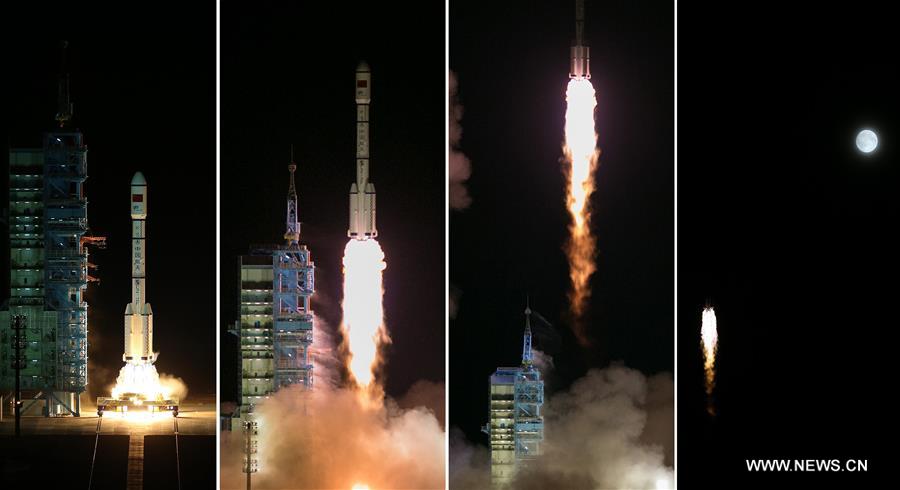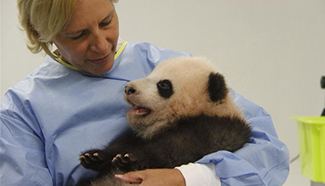
The combined photo taken on Sept. 15, 2016 shows China's space lab Tiangong-2 roaring into the air on the back of a Long March-2F rocket from the Jiuquan Satellite Launch Center in northwest China. (Xinhua/Ju Zhenhua)
JIUQUAN, Sept. 16 (Xinhua) -- China's space lab Tiangong-2 may serve for more than five years and co-exist with China's first space station, scheduled for completion around 2020, an expert at the Chinese manned space program told Xinhua Friday.
China successfully launched Tiangong-2 on a Long March-2F T2 rocket, blasting off from Jiuquan Satellite Launch Center in the northwest Gobi Desert Thursday.
With a designed life of two years, Tiangong-2 was originally built as a backup to Tiangong-1, which completed its mission in March, said Zhu Congpeng, chief designer of Tiangong-2.
"But we expect Tiangong-2 to serve for more than five years given the introduction of an in-orbit propellant technique for the first time," Zhu said.
In April 2017, China's first cargo spaceship Tianzhou-1 will be sent into orbit to dock with the space lab, providing fuel and other supplies.
"If the fuel-supply experiment goes well, China will then become the second country after Russia to master the in-orbit propellant technique," Zhu said.
While in space, the 8.6-tonne space lab will maneuver itself into orbit about 393 kilometers above the Earth's surface. As it is higher than past manned space missions, which were conducted at 343 kilometers, the Tiangong-2 will be more cost-effective and have a longer lifespan, said Zhu.
Though it looks similar to Tiangong-1, Tiangong-2's interior living quarters and life support system have been improved to allow longer astronaut stays.
It is designed to enable two astronauts to live in space for up to 30 days and to receive manned and cargo spaceships.
The space lab will also be used to conduct space science experiments on a relatively large scale compared to China's previous efforts.











